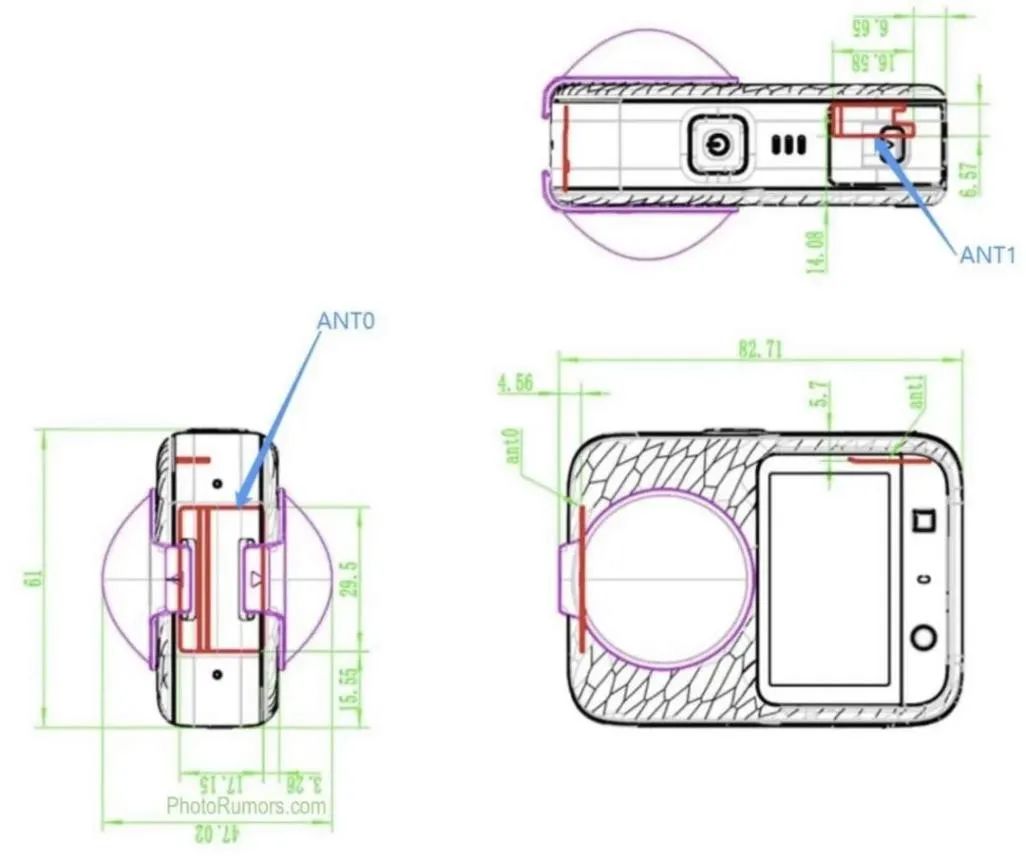Exclusive from 36Kr | DJI will release its first panoramic camera, the DJI Osmo 360, in July, which may lead to a major reshuffle in the market.
Author | Zhang Ziyi
Editor | Yuan Silai
Recently, Yingke exclusively learned from an informed source that DJI plans to launch its first consumer-grade panoramic camera, the DJI Osmo 360, in July. The panoramic camera market may be reshuffled.
DJI's product passed the certification of the US Federal Communications Commission (FCC) as early as October 2024. Judging from the design drawings disclosed by the FCC, the DJI Osmo 360 adopts a dual-lens symmetrical structure, and its body is more compact than the mainstream panoramic cameras on the market. It is equipped with a 1950mAh battery, which is the same specification as its action camera, the Osmo Action 5 Pro.
(Image from FCC)
Currently, most of the mainstream panoramic cameras are in the form of a pole, which may become unstable during strenuous exercise. According to the FCC pictures, DJI's product is flatter and easier to store, carry, and fix.
Product image
The panoramic camera is a niche segment in the imaging field. Although the market scale is small, it is growing rapidly.
According to Frost & Sullivan statistics, the global retail market size of panoramic cameras will increase from 2.51 billion yuan in 2017 to 7.85 billion yuan in 2027, with a compound annual growth rate of over 10%. Compared with manufacturers such as GoPro, DJI entered the imaging market a little later, but it is undoubtedly a more powerful competitor.
In 2018, DJI launched the Osmo Pocket, a handheld gimbal camera, and in 2019, it launched the Osmo Action, an action camera. Among them, the Osmo Action series has been gradually eroding GoPro's market share year by year. After the Osmo Pocket 3 was launched in 2023, it became a hit and was once called the "electronic Moutai". It lowered the threshold for shooting and won a large number of relatively novice content creators with its natural beauty effect, video-to-live feature, and other unique functions, becoming a phenomenon-level hardware product in recent years.
With the increasing number of content creators and the diverse ways of playing with short videos, the demand for various terminal imaging devices has increased accordingly. This is an opportunity that no hardware manufacturer will miss.
However, the supply chain of imaging devices is relatively transparent. The core components such as optical lenses mainly come from a few leading manufacturers. The competitiveness of each product is more reflected in brand premium, the ability to integrate product software and hardware systems, and the end-user experience. In the consumer-grade panoramic imaging segment, the market pattern has not yet been solidified, and there is still significant room for latecomers.
DJI has accumulated mature gimbal technology in the drone market. Whether it is an action camera or a pocket camera, in essence, it is the application of the core technology of drones in the imaging industry. For DJI, this kind of migration is not difficult. Launching a panoramic camera is just another expansion of its product portfolio.
Whether DJI's entry will completely change the existing market pattern is worth observing. The panoramic camera market is far from reaching its end.

